Our Imaginings
If you have any questions about these items, or are interested in acquiring something, please click the Email Us button at the top of the page.
The turbo z180 board is a technically updated, very high-performance board. Think of it like an all-in-one Model II CPU board + memory board. However, it is not a direct replacement with 100% compatibility with TRSDOS and other applications due to certain incompatibilities the Z180 has with the Z80. It will work with XENIX as we will have a new Z180 control program for use with XENIX. We may work on the other compatibility issues in the future such that it can be used with those other OSes and applications, but are not making any promises at this time.
"One miracle of science at a time, okay?" - Doc Proton
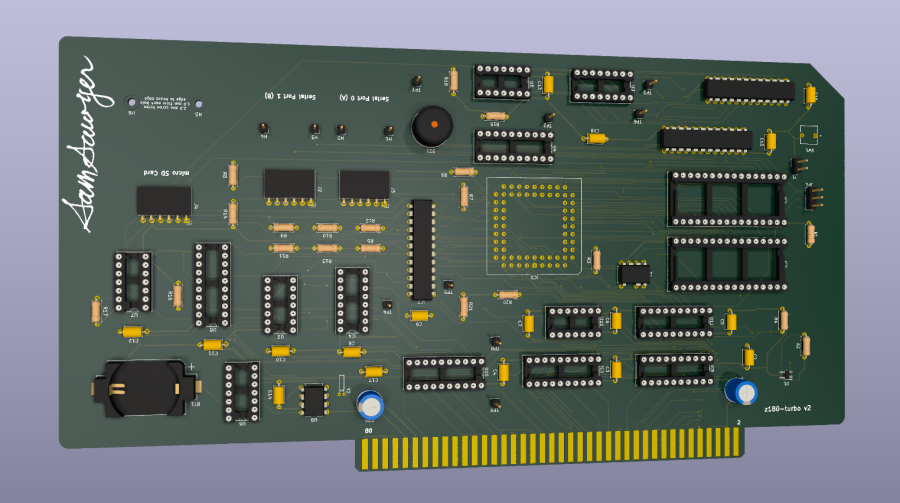
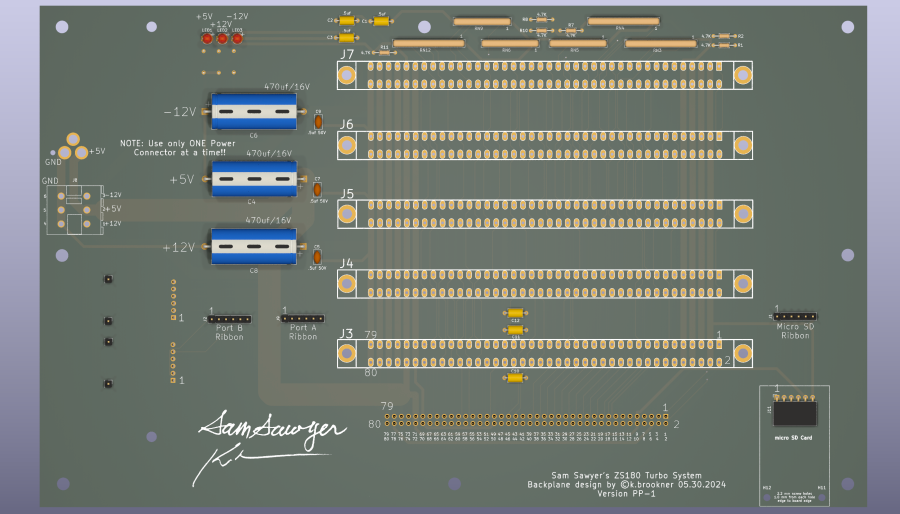
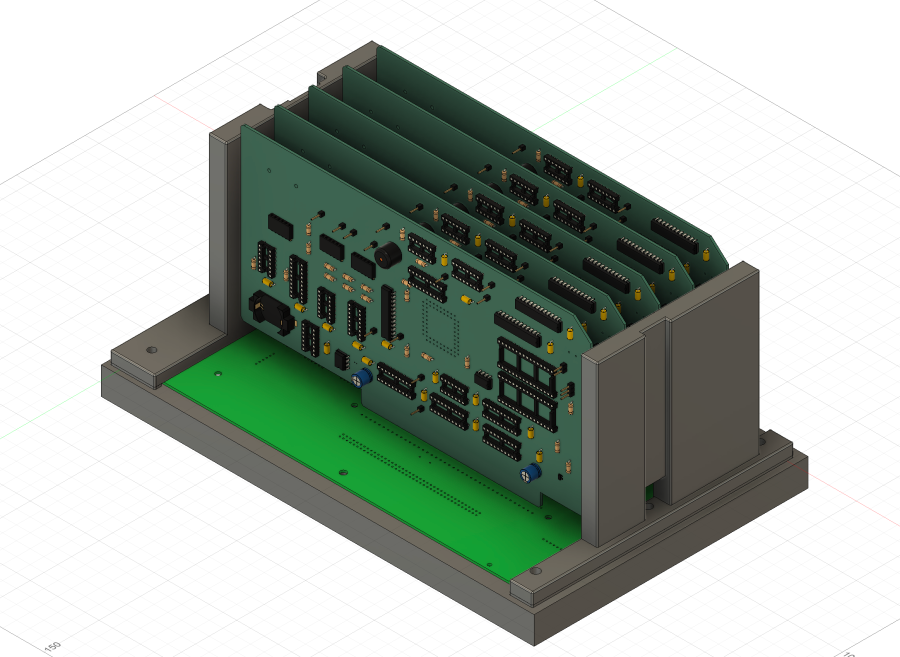
Hardware Related
-
Model II/16 80 pin system bus and option card form factor compatibility
-
Z8S180 CPU, software selected clock speeds of 9.22, 18.43, 36.9 MHz
-
Dual serial console ports
-
Dual DMA ports
-
Battery backed-up Real Time Clock
-
Micro SD card interface for mass storage
-
512 MB Flash ROM, 512 MB SRAM
-
Software selected memory bank switching modes, Model II Z80 or Z180 software MMU
-
Model II legacy port address decoding
-
Can run stand alone, in a small desktop cage with other boards or in a Model II or 16
-
Not intended for use with Models 12, 16B, or 6000
Available Software Support
-
RomWBW compatibility for RC-2014 Z180, SCZ180, RCZ180 platform builds
-
Prebuilt RomWBW version 3.2.1 BIOS firmware and boot loader
-
Compatible prebuilt CP/M or enhanced CP/M and application image files
§ DRI CP/M 2.2
§ DRI CP/M 3
§ ZPR-DJ & ZDOS 1.1
§ NZCOM
§ ZPM3
§ WordStar 4 application
-
Many other OS and application images can be custom built
Software Support in Development
-
Tandy XENIX 3.4 OS
NOTES
-
This card is under development and is not yet available.
Yes, that's right, it's a new version of XENIX! Read the Tandy_68000_XENIX_3.4.3_Release_Notes.txt file in the download for full information about what's included in this release.
Tandy 68000/XENIX 3.4 is only available as an upgrade to 3.3. To install 3.4, you must have upgraded to 3.3.
New Kernel Features
-
Brand new kernel supporting automatic detection of MMU size, with automatic adjusting of user memory to fit what the MMU can support.
-
Automatic move of allocated items (such as disk buffers) outside of MMU-addressable space, which maximizes memory for user processes.
-
A crashbeep feature, which is settable using /etc/cfg. When enabled, the kernel will beep when halting for any reason.
-
Real Time Clock driver for both the trs80gp emulator [http://48k.ca/trs80gp.html] and Tandy Emeritus' new DS1511 RTC daughter board. Allows auto-booting XENIX by typing F1 at the boot prompt; type 'autoboot -a' as root to enable. When using trs80gp, the RTC driver allows use of Turbo and Haste modes without the XENIX clock speeding up.
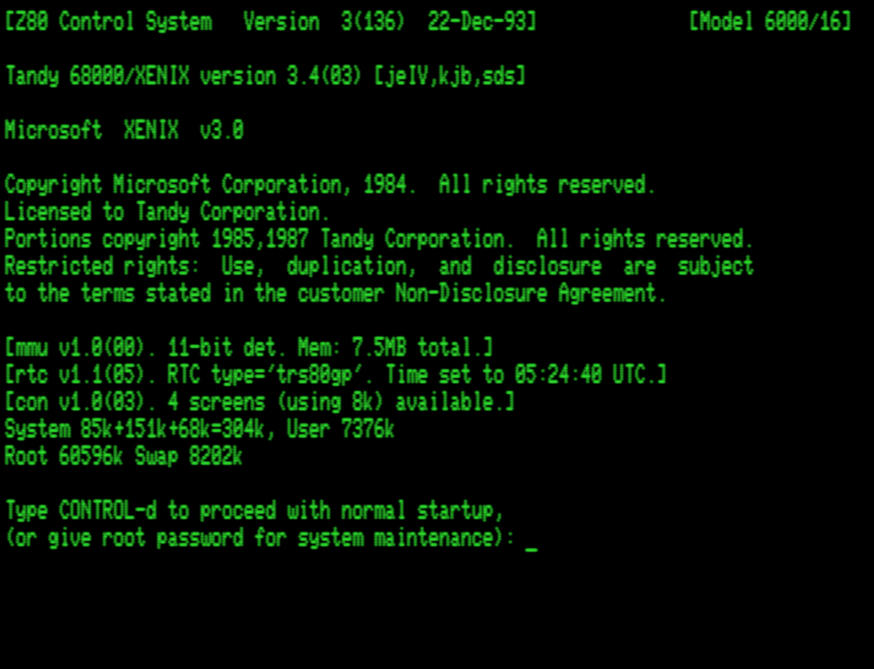
New & Updated Utilities
-
New utility /etc/hwclock, which allows querying and setting of the RTC. Setting the RTC is not supported in trs80gp.
-
An /etc/reboot link to haltsys was added, which reboots the OS instead of halting.
m68kdiags & m68010diags are 68000-based diagnostics programs which are loaded at the boot prompt instead of
/xenix . These new diagnostic programs can test the full limits of CPU cards with MMU upgrades up to the maximum size the hardware can support. These utilities have the same auto-detection of MMU size that XENIX 3.4 does.
-
Updated /etc/cfg to support the new 3.4 kernel features.
-
Updated version of /etc/getty which displays both the system name and the terminal in the banner.
-
New and updated help pages for all of the above.

Modern Hardware for Vintage Big Tandy Computers
This board uses a modern design to solve the problem of wanting to add cards to a Model 12 which has no card cage. It is also a significant upgrade to the original Tandy backplane, having better power distribution and the ability to extend the Z80 bus to our new external test fixture board.
This board is only sold bare (no parts installed at all). We do provide extensive and detailed instructions as well as a full Bill of Materials (parts list). Make sure you read all the instructions before doing anything with this board, there are important tips and details you will need to know before starting.
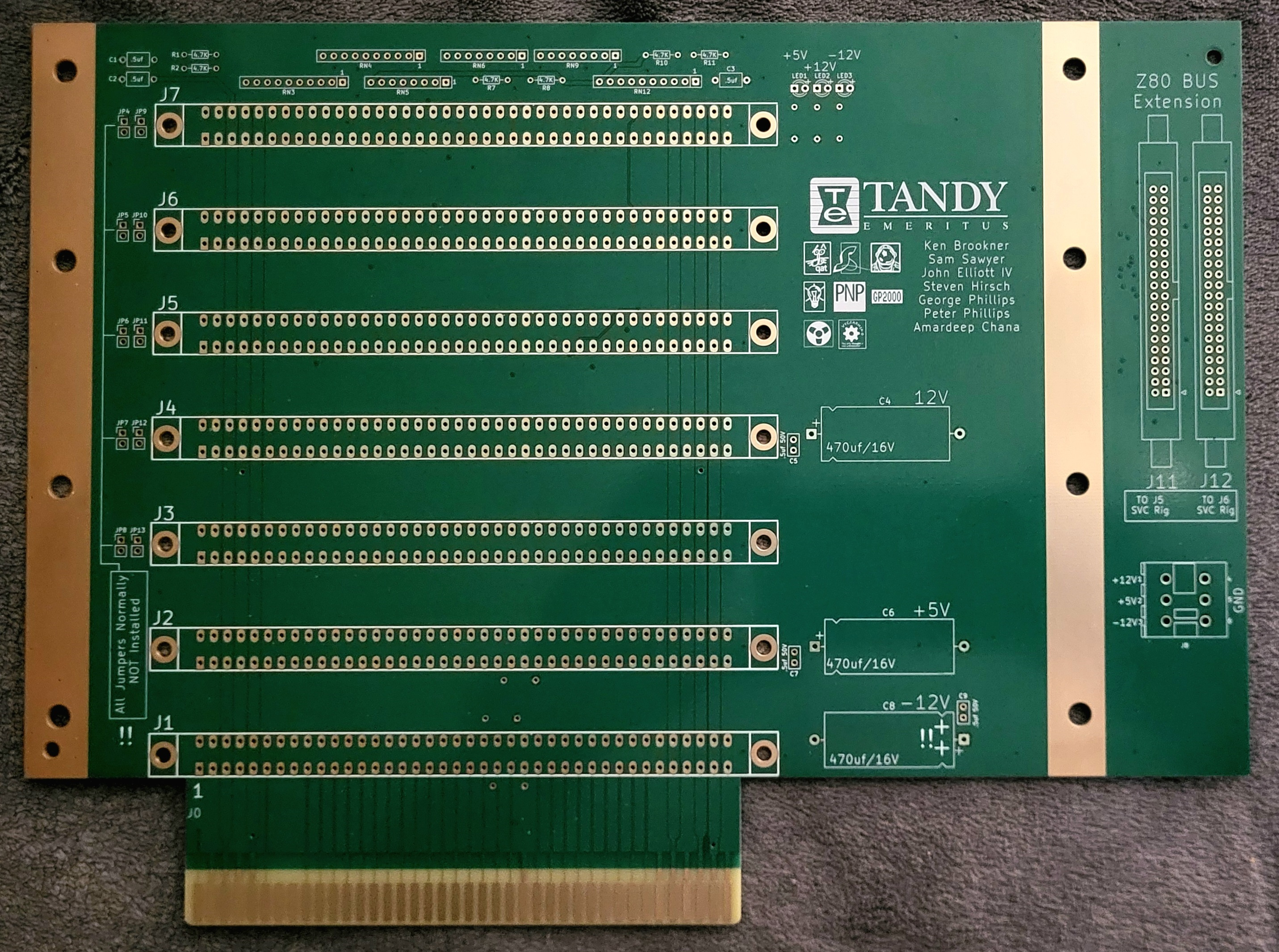
The External Test Fixture board may be used by itself to power the turbo-z180 board as it has a spot for a power jack. It may also be used when diagnosing a board for your Big Tandy by extending the Z80 bus out to it via the two connectors on our Enhanced Backplane or by the same two connectors on our Diagnostic Spacer card.
The Diagnostic Spacer card has two main uses. As was mentioned, it can extend the Z80 bus out to the Test Fixture. It may also be used to skip a slot in a card cage without breaking the Z80 interrupt chain, when its two jumpers are installed.
Both boards shown are also only sold bare. Their instructions are in the same document as the Enhanced Backplane.
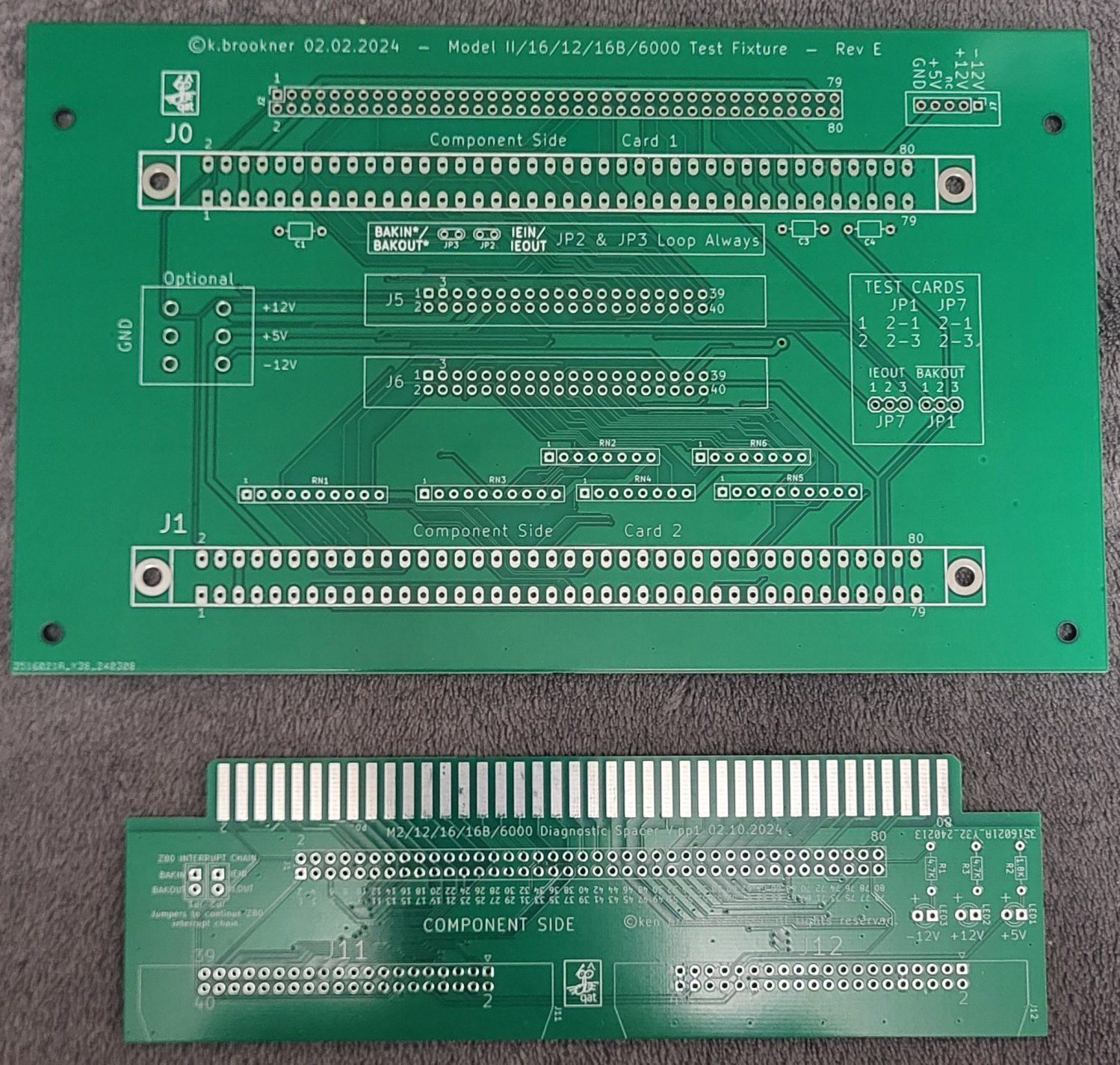
The first version of our USB-to-Tandy Keyboard adapter allows connecting a modern USB keyboard to your Big Tandy computers. It is based on a Raspberry Pi Zero with a hat allowing one to plug in a Big Tandy's keyboard cable. Because of this, it has a boot delay of around 30 seconds. In addition to all the standard ASCII keys, it supports the virtual console feature of XENIX 3.2 and later via the ALT-1 through ALT-9 and ALT-0 keys. It also supports macros and key remapping on any key on the USB keyboard, which can be setup via a configuration file on its micro SD card.
This device is sold either as a bare board with the SD card or fully built. The SD card has both usage instructions and a BOM + build instructions.
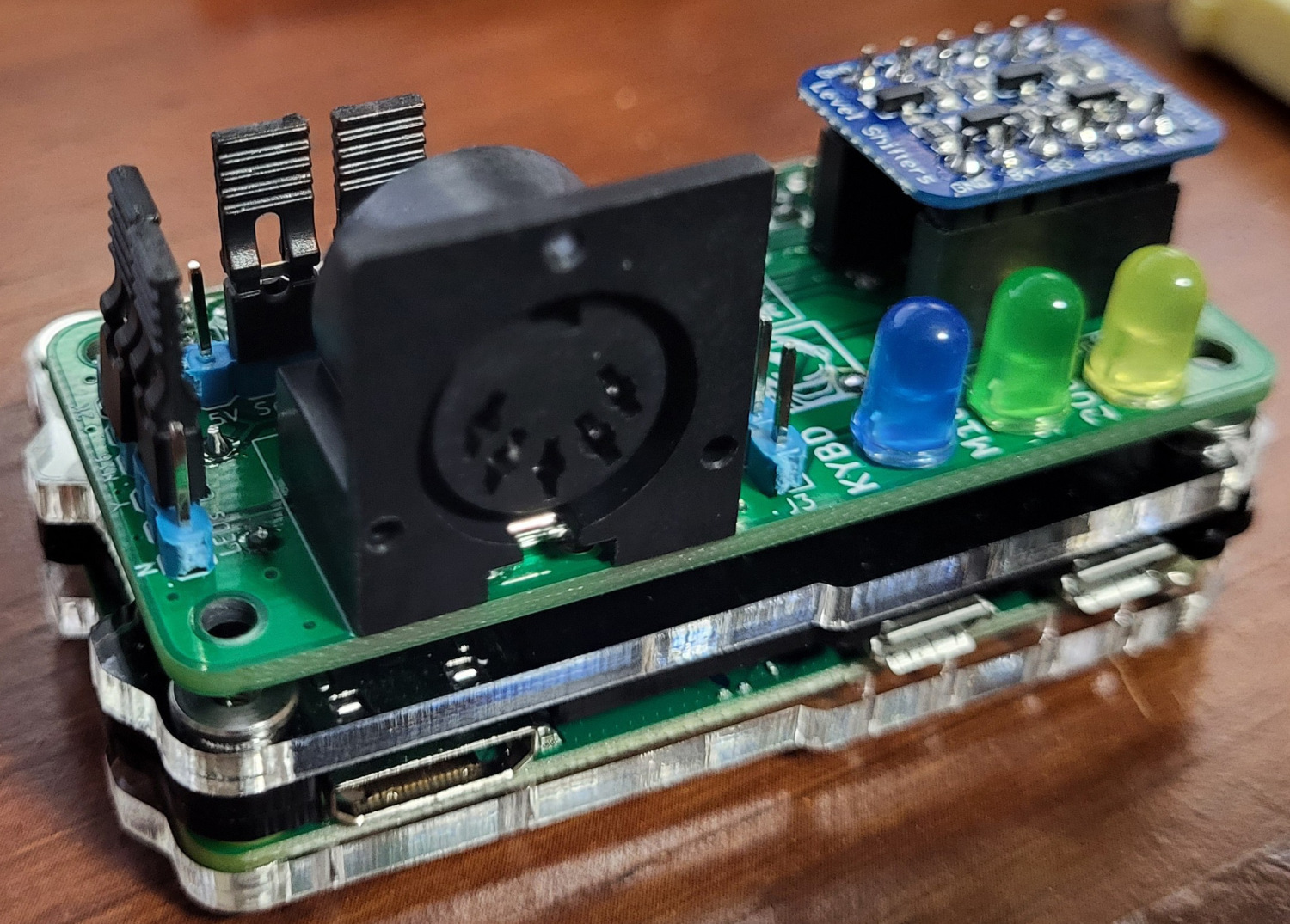
The latest version of our USB-to-Tandy Keyboard adapter also allows connecting a USB keyboard to Big Tandy computers. This new design is now instant on! It has no boot delay like the V1 did. In addition to all the standard ASCII keys, it supports the virtual console feature of XENIX 3.2 and later via the ALT-1 through ALT-9 and ALT-0 keys. It no longer supports macros, however.
This device is sold assembled and tested only. STL files are available for printing a case.
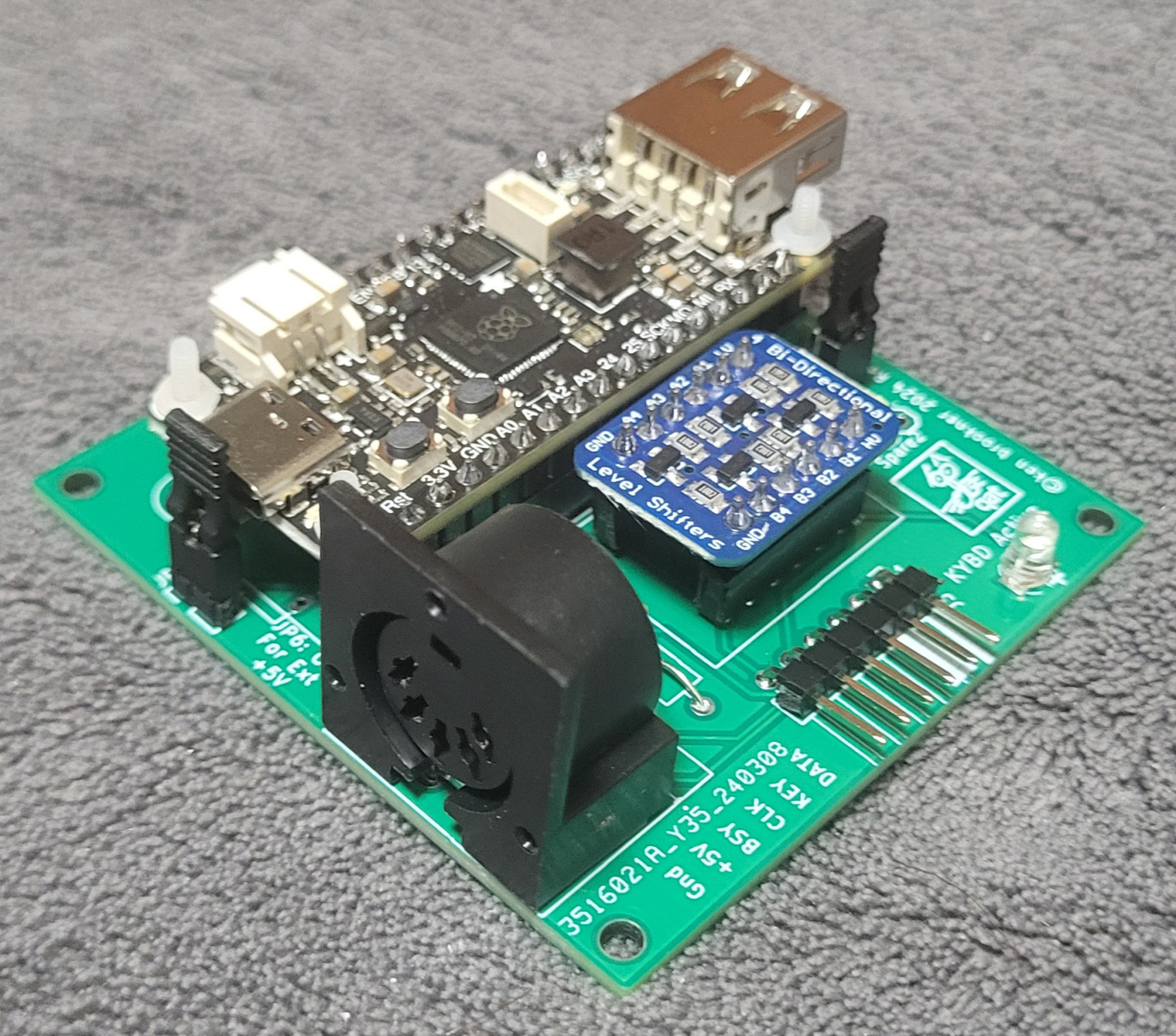
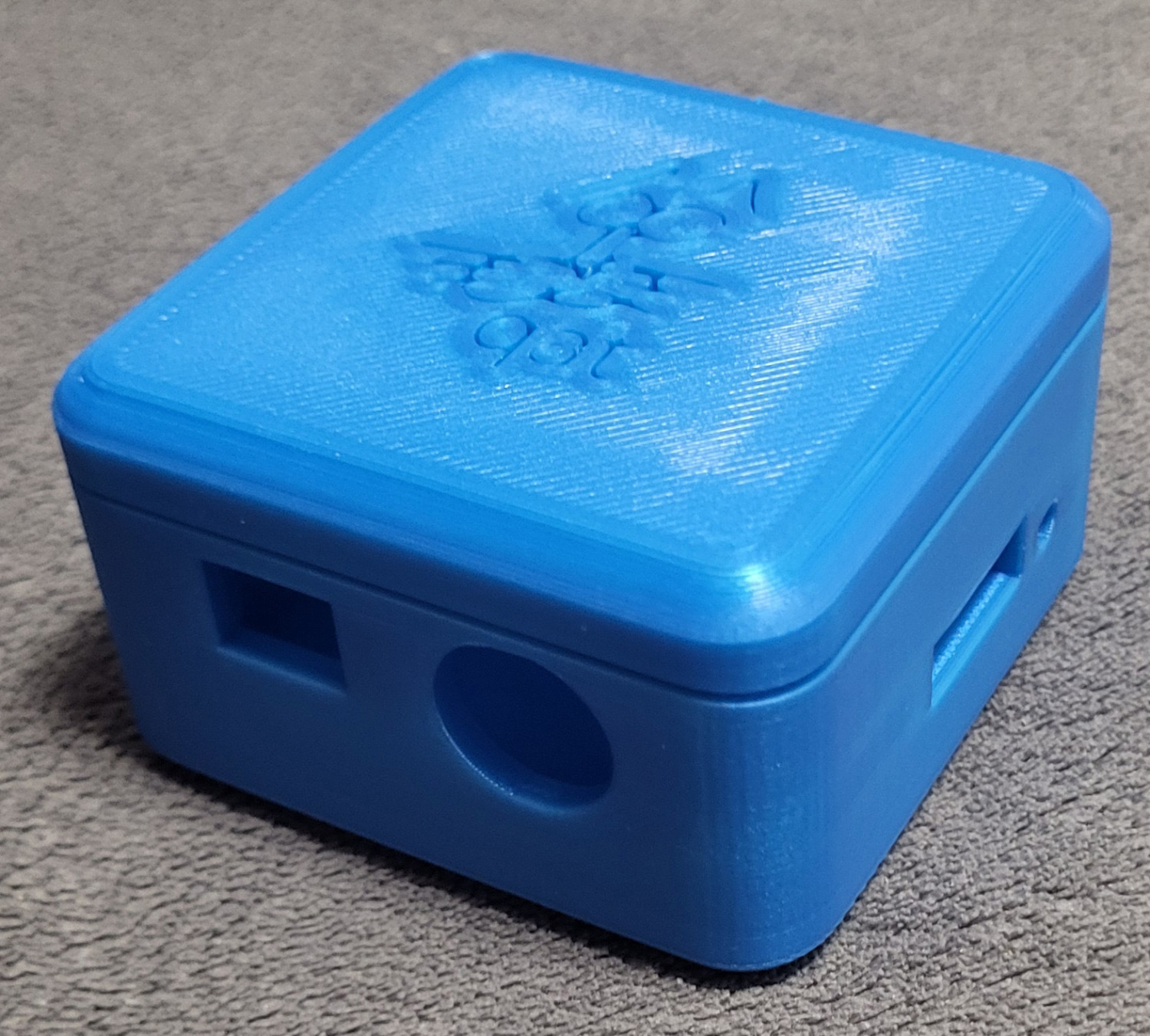
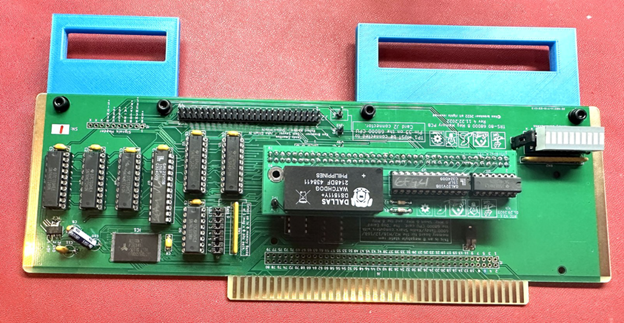
7.5 Megabyte SRAM Card
This SRAM card replaces all the Tandy 68000 memory cards in your system with a single card containing the maximum amount of memory the CPU can address, 7.5 MB. It has available blinken lights showing memory accesses! It also has a spot for a connector for add-on daughter boards, such as our very popular RTC board (pictured). The SRAM card works best when paired with our MMU-3 MMU extender board for 68000 CPU cards, and with XENIX 3.4.
Warning: Use of this card requires the replacement of one PAL with a GAL (included) on the 68000 CPU card. The new GAL which replaces the PAL is not compatible with original Tandy 68000 memory boards. But then, who cares? Once you have our SRAM card, you’ll never want to go back!
This device is sold assembled and tested only.
MMU-3 Enhanced MMU Extender for Tandy 68000 CPU Boards
This board plugs in between the 68000 processor and its socket on a Tandy CPU card, extending the MMU onboard by three bits to a total of eleven bits, enabling the CPU to assign user processes anywhere in 68000 memory space, up to the maximum of 7.5 MB. (The last 0.5 MB of addresses on Tandy’s 68000 CPU is dedicated to devices and device control.) Due to only having 8 bits in the built-in MMU, as shipped the Tandy CPU boards could only place user processes in the first megabyte of memory. Later, Tandy came out with an MMU extender board which added two bits, bringing the memory usable for user processes up to 4 MB. Our MMU 3 works on all Tandy 68000 CPU cards, and uses the same CPU card modifications that the Tandy MMU board did. Our MMU-3 extender was based on the original Tandy 2-bit extender design by Jerry Ballard.
NOTES:
-
Use of this board requires some simple modifications to your Tandy 68000 CPU board, unless you already have a Tandy MMU extender installed.
- This device is sold assembled and tested only.



